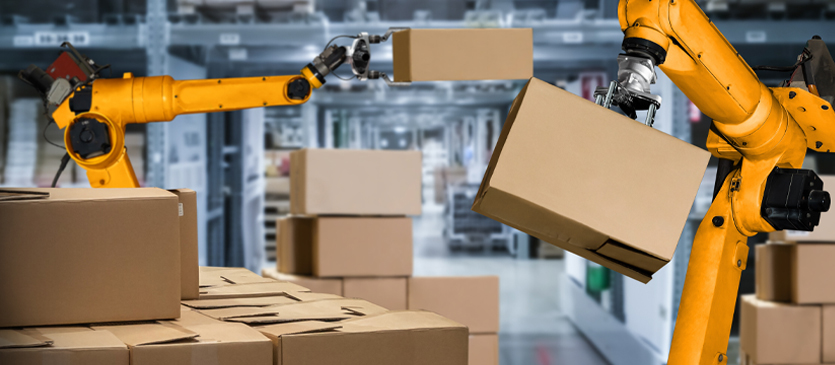How Automation Can Solve Supply Chain Disruptions in a Post-COVID Era
The dramatic increase in supply chain problems in the past year has led senior executives in the manufacturing, warehousing, transportation, and retail industries to search for innovative solutions. Many turned to technology to help ease disruptions throughout the pandemic, paving the way for new advances in automation for supply chain management. Exploring opportunities to incorporate automation into your business’s supply chain operations, though perhaps a bit daunting at first, can lead to a great leap forward in productivity and profitability.
Proposed Solutions to Supply Chain Disruptions
The 2022 Supply Chain & Logistics Executive Survey recently released data from supply chain leaders detailing the most common problems resulting from supply chain disruptions. As 88% of businesses have faced supply chain disruption in 2021, something must be done to ease the burden faced by businesses across industries.
Data revealed that businesses dealing with supply chain issues have seen:
- Customers facing delays (58%)
- Staff shortages (43%)
- Stalling of production (38%)
Executives are investing more money than ever before to improve their organization’s supply chain. Notably, 57% of survey respondents reported investments into technology to increase customer satisfaction “by keeping high-demand items in stock, providing consistent on-time delivery, increasing inventory visibility, and optimizing fulfillment options.” The move towards automation signals a new demand for efficient technological solutions for businesses combating supply chain disruptions.
Adjusting to COVID-19’s Impact
Unsurprisingly, COVID-19 has forced businesses to consider new solutions to navigating manufacturing delays and supplier concerns that are unable to be controlled. In fact, data from the aforementioned survey revealed that 50% of supply chain executives have moved manufacturing operations nearshore because of COVID-19 and the geopolitical arena. Additionally, 65% of respondents have increased the number of nearshore suppliers, noting the same concerns.
Incorporating automation into your business operations can help manage and adapt to real-world trends affecting the supply chain. Currently, common problems facing supply chains include:
- Fluctuating customer demand
- Keeping up with new trends in the global market
- Choosing the right delivery channels
However, automation services can effectively help combat these inevitable supply chain issues in today’s market. With supply chain automation, businesses can improve the customer experience through:
- Small pick-and-pack warehousing robots for quick delivery
- Instantaneous orders for warehouse equipment due to extreme weather
- Optimizing truck routes for speedy delivery
- Transparency through real-time transit and delivery status notifications
Supply chain issues are here to stay, but that doesn’t mean they’re unmanageable. Automation is the key to tackling the staffing and workforce matters employers increasingly confront as they take stock of the current state of the global supply chain.
Will Supply Chain Become Fully Automated?
As automation increases in popularity in the supply chain, businesses are looking for ways technology can collaborate with the human workforce. With more process and operations transparency within the supply chain, manufacturers are beginning to realize that automation does not eliminate jobs. Instead, it actually helps people make better decisions and become better at their jobs. With 90% of organizations already using technology in their business practices, and 50% reporting plans to implement additional automation into their supply chain management, it’s clear that automation will certainly have a place in the future.
Implementing REA JET
As an industry leader in coding and marking solutions, REA JET knows the ins and outs of the production process. We understand how automation eases the burdens supply chains face.
As the preferred coding and marking supplier for all manufacturing sectors, REA JET’s reliable, state-of-the-art technology has served manufacturers small and large around the world for the past 30 years. REA JET’s coding and marking solutions improve efficiency and reduce the risk of traceability errors. Thanks to our high visibility and uniform marking capabilities, we guarantee you’ll receive quality markings for readability and scanability.

